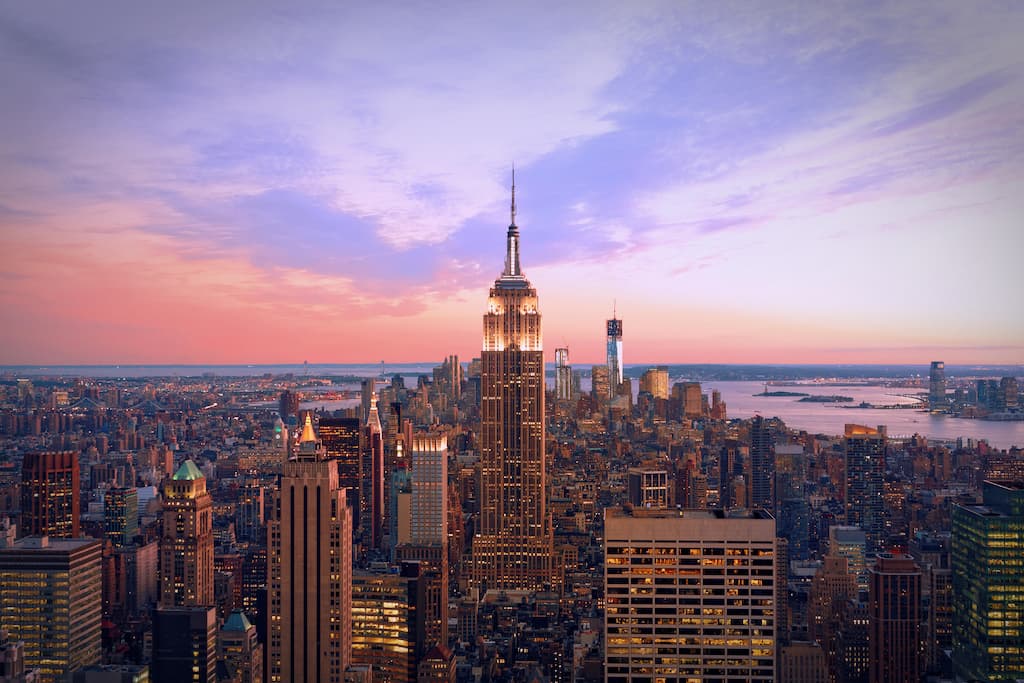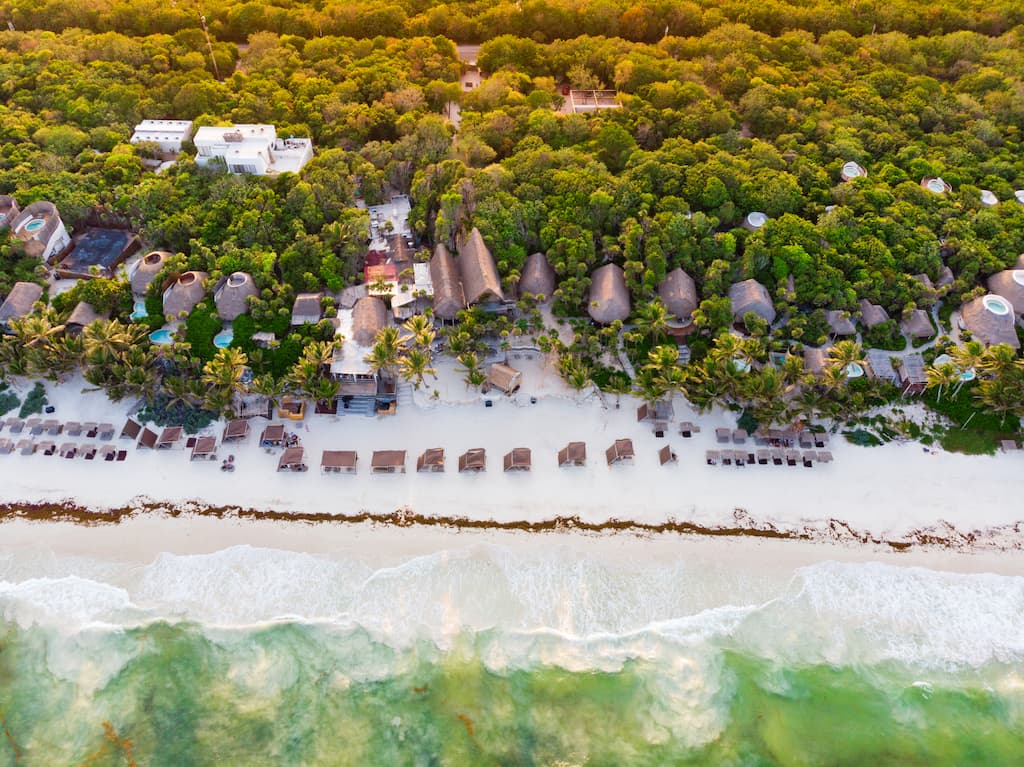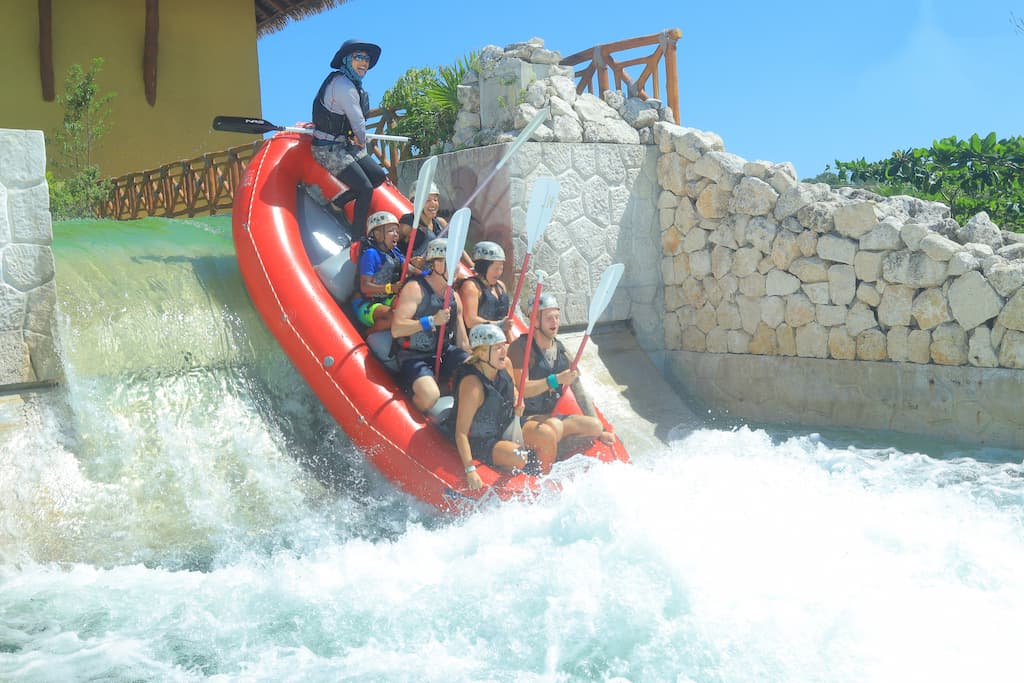Is Guatemala In Mexico And Why You Should Visit Both Countries

Has the question, ‘is Guatemala in Mexico’ ever crossed your mind?
Are you visiting Mexico and wondering if it is possible to visit Guatemala at the same time, but you don’t know much about it? If so, then this article is for you.
This article will help to answer everything you ever wanted to know about Guatemala, including interesting facts about the country, the best things to see and do in Guatemala and what makes Guatemala unique. There is even advice on how and where to cross the border from Guatemala to Mexico.

It will also cover the similarities and differences between Guatemala and Mexico and will help you feel informed and more confident in planning a trip to Guatemala.
Furthermore, it will convince you that Guatemala is a special destination with many unique sights that are well worth visiting, especially if you are already in Mexico.
Is Guatemala In Mexico?
No, Guatemala is not in Mexico. Guatemala is an independent country located south of Mexico, and the two countries share a long land border. Plus, Mexico and Guatemala each have a Pacific and Caribbean coastline.
Map Of Guatemala And Mexico

This Mexico and Guatemala map clearly shows Mexico and Guatemala as two separate but neighbouring countries.
Is Guatemala Part Of Mexico?
If you have been wondering if Guatemala is a part of Mexico, then the answer is no, Guatemala is not part of Mexico.
Guatemala is a separate independent country from Mexico. It has its own laws, government and President. Mexico has no influence or jurisdiction over Guatemala.
The Guatemala capital city is Guatemala City, not Mexico City.
Guatemala shares a border with Mexico on its north and west side. To the east, Guatemala borders Belize, Honduras and El Salvador. It has a long Pacific Ocean coastline on its western edge and a short Caribbean coastline on its eastern edge.
What Are The Similarities Between Guatemala And Mexico?

The two countries have many similar characteristics as a result of their shared cultural and historical heritage.
Both countries have a strong Mayan heritage which is evidenced by historical Mayan sites such as Chichen Itza in Mexico and Tikal in Guatemala. This Mayan heritage influences contemporary culture in the two countries.
The history of Guatemala has many similarities to Mexico. Each country has indigenous peoples who, in the past, were invaded and colonised by Spain.
Mexico and Guatemala have a shared language (Spanish), both are Catholic nations, they have similar agricultural industries, and both have similar corn-based cuisines.
For visitors, both countries offer varied landscapes, including dense jungles, active and dormant volcanoes, mountains, pristine beaches and modern cosmopolitan cities as well as colonial cities influenced by Spanish architecture.
What Are The Differences Between Guatemala And Mexico?

As it is a smaller country, Guatemala geography is not as varied as Mexico’s. Northern Mexico has dry, cactus-filled landscapes, and the incredible Copper Canyon (Barranca del Cobre) is a deep ravine-riddled canyon which is bigger than the U.S Grand Canyon. Guatemalan topography is less extreme in its variety and has a similar landscape to southern Mexico.
Mexico also has more indigenous groups than Guatemala. Guatemala has a strong Mayan presence, whereas, in Mexico, the Mayan people are one of many indigenous groups.
However, over 43% of Guatemala’s inhabitants are considered indigenous people – one of the 22 Mayan ethnic groups, compared to only 15% in Mexico. When visiting places like Antigua or Lake Atitlan in Guatemala, you will notice that indigenous women wear their traditional dresses.

Again, due to its larger size, Mexico has several colonial cities, whereas Guatemala only has one (Antigua).
Standards of living (such as health, employment rates, education levels and accessibility, and the quality and reach of public transport) are generally higher in Mexico than in Guatemala.
Although 65% of the people in Guatemala speak Spanish, the country has 23 other officially recognised languages. Mexico does not have an official language though it recognises 69 different languages.
Generally speaking, the tourist infrastructure in Mexico is better than in Guatemala, so, in most places, public transport in Mexico is more extensive, regular and comfortable than in Guatemala, and there is a wider choice of accommodation options.
On the other hand, Guatemala is a less developed country than Mexico and will offer a more unique travel experience. And, travelling in Guatemala is way cheaper than in Mexico and in particular places like Cancun or Tulum.
Quick Guatemala Country Facts

What Is The Size Of Guatemala?
Guatemala’s size is 42,040 square miles compared to Mexico’s 761,600 square miles.
Guatemala is small compared to Mexico. In fact, it is less than half the size of the U.K., and it is 90 times smaller than the U.S.!
What Is The Nationality Of Guatemala?
If you have Guatemala nationality (meaning that you were born in Guatemala), you are considered to be a Guatemalan. In other Central American countries, Guatemalans are often referred to as ‘chapines’.
Guatemalans are a mix of European ethnicity and indigenous Americans.
The indigenous culture in Guatemala is stronger than in many other central American countries. According to the Guatemala national census of 2018, 43.56% of Guatemala identifies as indigenous, with 41.66% of this figure identifying as Mayan.
What Is The Population Of Guatemala?
The Guatemala population is approximately 17.6 million people, which is a fraction of the Mexican population of 126 million people.
What Is Guatemala Famous For?

Guatemala is famous for many things.
Firstly, there is the charming and attractive colonial city of Antigua which was once the capital of Guatemala. The city is packed with ornate, colourful buildings such as the Santa Catarina Arch and Iglesia de la Merced. Climbing Cerro de la Cruz gives incredible views of the city.
Antigua’s architecture looks a lot like the architecture of San Cristobal de Las Casas because both cities were important hubs built by the Spaniards during colonial times.
Then you have the historic Mayan ruins of Tikal, a picture-perfect UNESCO World Heritage site. The ruins are equally as impressive (if not more so) than Mexico’s Chichen Itza but with a fraction of the crowds.
Guatemala also has 37 volcanoes, including three active volcanoes. Visitors can climb to the top of several of the volcanoes, including the 4,220-metre-tall Volcán Tajumulco, which is the highest volcano in Central America.
The most famous volcano to climb is Acatenango, located near Antigua. What’s special about Acatenango is that it allows visitors to get super close to the most active volcano of Guatemala – El Fuego. El Fuego means ‘the fire’ in Spanish, and being close to a volcano constantly erupting and spitting fumes and fire is a once-in-a-lifetime experience.

You can explore stunning Lake Atitlan, generally considered to be one of the most beautiful lakes in the world and a UNESCO-designated biosphere. Travel from village to village by boat or get active and take part in watersports on the lake, such as paddle boarding or kayaking.
Visitors can join a jungle hike in the dense jungle surrounding the Rio Dulce or swim in the pretty waterfalls and turquoise pools at remote Semuc Champey.
Go shopping for Mayan handicrafts and souvenirs at the infamous Chichicastenango Market near Xela, learn to surf at El Paredon or immerse yourself in Spanish language lessons at Quetzaltenango. The list of attractions in Guatemala is endless!
Finally, you have diverse, colourful and fascinating people who are keen to welcome you to their beautiful country and share their heritage, customs and country with you.
What is the currency of Guatemala?
The currency of Guatemala is the Guatemalan Quetzal, named after the Resplendent Quetzal, which is Guatemala’s national bird.
The currency is divided into 100 centavos (similar to U.S. cents or U.K. pennies) and features both quetzal metal coins and paper notes.
What is the meaning of Guatemala?
The name Guatemala meaning the ‘place of many trees’, is believed to have derived from the indigenous Nahuatl and Mayan languages.
Is Guatemala In Mexico: FAQ

Is Guatemala A State?
No, Guatemala is not a state, and it is not a state within Mexico. It is an independent democratic country with its own flag, currency, lawmakers and customs.
The official name of Guatemala is the Republic of Guatemala.
Is Guatemala In Central America?
Yes, Guatemala is in Central America. There are seven countries that officially constitute Central America which are Guatemala, Costa Rica, El Salvador, Honduras, Nicaragua, Panama and Belize.
The geography of this area is a little confusing as, despite strong cultural and linguistic links, Mexico is not considered to be part of the geographical region of Central America.
If you are wondering what continent is Guatemala in, the country is part of the North American continent (of which Central America, the U.S., Canada and Mexico are part of).
Did Guatemala Ever Belong To Mexico?

The short answer is yes; it did – but only for a short period of time. Plus, when it was part of Mexico, Guatemala retained some autonomy, so technically it was part of Mexico rather than belonging to it.
A little history about Guatemala may help to explain this complicated part of Guatemala’s past.
Between the 16th and early 19th centuries, Guatemala was under Spanish rule and part of New Spain, which includes modern-day Mexico. The area which we now know as Guatemala was at that time officially known as the Captaincy General of Guatemala.
In 1821, the Captaincy General of Guatemala declared its independence from Spain and officially joined the First Mexican Empire.
This union did not last long as, in 1823, Guatemala broke away from Mexico and decided to join the newly established Central American Federation alongside Costa Rica, Nicaragua, Honduras and El Salvador.
However, shortly after its formation, the federation of nations began to fall apart, and eventually, on the 21st of March 1847, the Guatemala people declared their independence from Mexico and from the Central American Federation and became a republic.
Is There A Wall Between Guatemala And Mexico?

No, there isn’t a wall on the Mexico Guatemala border. There have been false claims online that there was a wall built between the two countries, but in reality, the wall does not exist. There are just the usual border crossings that you would find in other parts of the world.
The Guatemala Mexico border runs for 871 kilometres (or 541 miles). There are ten official Guatemala Mexico border crossings, mostly situated near populated areas or on main thoroughfares. Large swathes of the border is densely forested land, and some of it is in the middle of rivers!
Popular Mexico and Guatemala border crossings include Ciudad Hidalgo to Tecun Uman and San Cristobal de las Casas to Le Mesilla. Adventurous travellers can choose Frontera Corozal, a short river crossing in the jungle crossing from Palenque (Mexico) to Flores (Guatemala).
Is Guatemala Safer Than Mexico?

According to the U.K. and U.S. government statistics, Guatemala has one of the highest levels of violent crime in Latin America. However, most of this violent crime is gang-related and is not aimed at (or involves) tourists. This is not to say that theft and armed robbery against tourists does not exist in Guatemala, as it does sadly occur at times.
Guatemala has a slightly higher score on the Numbeo crime index than Mexico (59.71 as opposed to Mexico’s 54.34), so it is difficult to say conclusively if one country is safer than another. Each country has its own problems with gangs, drugs and its ‘no go’ areas.
In both Mexico and Guatemala, it is essential to heed foreign office or state department travel advisories. Find out before you travel which are the no-go areas within each country (or within individual cities or states) and do not travel there. Ideally, you should avoid travelling through the regions as well.
When on the ground in Mexico or Guatemala, follow the usual essential safety precautions such as avoiding poorly lit areas at night, not flashing valuables or carrying large amounts of cash, not hailing or travelling in unlicensed taxis and so on.
During our extensive travels through Guatemala, which included Antigua, El Paredon, Lake Atitlan, Flores and Semuc Champey, we have never felt unsafe. The people in Guatemala are extremely friendly and very welcoming.
We’ve also travelled extensively in Mexico, and the only places where we didn’t feel 100% safe were some Mexico City neighbourhoods. From our experiences, the safest vacation places in Mexico include Merida, Valladolid, Bacalar, Isla Mujeres, Cancun and Tulum.

Is Guatemala In Mexico? – Final Word
Finally, if you have been asking yourself is Guatemala in Mexico, I hope that this article has helped to answer your question conclusively.
The countries of Guatemala and Mexico are very similar but don’t think that the Republic of Guatemala isn’t worth visiting because of this. If you travel from Mexico to Guatemala, you will soon know that you are in a different – and very special – country.
Guatemala has its own identity, with its own customs, currency, and festivals, plus unique and memorable attractions and locations. It has a rich cultural and historical heritage and incredible landscapes, and it is a vibrant, varied nation.
Guatemala is a fantastic destination at any time of the year that should be on every traveller’s bucket list.
Mal xxx












